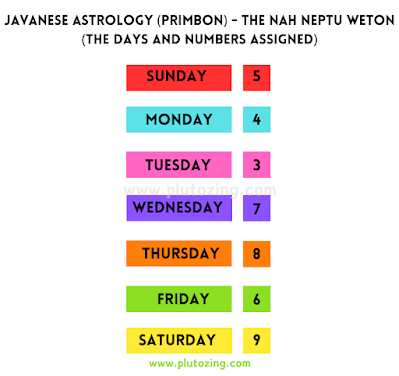WHAT IS PRIMBON
Primbon is a traditional Javanese book used to guide decisions in life, based on the belief that human life is connected to the universe. Originating from Javanese royal courts, it covers topics like predictions, numerology, and advice on health, relationships, and business. It also offers spiritual teachings and practical tips, with calculations based on the Javanese calendar, incorporating both Islamic and older Hindu-Buddhist influences.
The book is still consulted by many, particularly in Javanese, Balinese, and Lombok communities, before important events such as marriages or business ventures. Primbon includes various teachings like reading auspicious days, traditional healing, and interpreting dreams. It is a blend of ancient knowledge and mystical traditions, with some critics considering it outdated while others see it as a crucial part of Javanese heritage.
HISTORY AND DEVELOPMENT OF PRIMBON
Primbon, a traditional Javanese system of knowledge, is deeply connected to the influence of Islam in Indonesia, especially on Java. Initially, it was made up of personal notes passed down within royal courts. In the 20th century, primbon manuscripts began to be printed and published.
Primbon's roots lie in early human attempts to understand and avoid misfortunes by observing natural phenomena. These observations were recorded on palm leaves, which later became known as "lontar." Over time, these notes were organized into a system that included calendars, seasons, constellations, dream interpretations, and mystical knowledge, forming what we now know as primbon.
The spread of Islam in Java, led by the wali songo (Islamic leaders), influenced primbon by infusing Islamic elements. References to gods were replaced with Quranic verses, and the calendar system transitioned from the Hindu-Buddhist Saka calendar to the Islamic Hijri calendar under the leadership of Sultan Agung.
Primbon incorporates both Javanese and Islamic traditions, and it emphasizes the balance between fate (destiny) and human effort. Destiny in Javanese belief is divided into two types: Takdir Mubram, which is unchangeable, and Takdir Muallaq, which can be influenced by human actions through effort and prayer.
The first printed version of primbon appeared in 1906, and it evolved into a systematic guide that teaches how to choose good days for important events, based on the influence of natural forces. The belief in fate, along with elements of wisdom and astronomy from Persian Sufism, shaped primbon into a comprehensive system that continues to be respected in Javanese culture.
THE CALCULATION SYSTEM
Calculations in the Javanese almanac involve the calculation of each day, pasaran day, month, and year, each with its own calculation, and are used to identify events that may occur in the future. Here, the almanac is considered to be a tool for always being alert and cautious. Meanwhile, if the almanac calculations show positive things, then it can be a boost of encouragement and motivation for someone in their life.
In the almanac, there is a belief in the four characteristics of bad days, namely:
- Taliwangke day (a time marker day)
- Samparwangke day (a time marker day)
- Kunarpawarsa (year of disaster)
- Sangarwarsa (year of disaster)
- Rahayu month (good month)
- Sarju month (moderate month)
- Anggara Kasih
TEACHINGS
Primbon encompasses eleven teachings, which include pranata mangsa, petungan, pawukon, pengobatan, wirid, aji-aji, kidung, ramalan, tata cara slametan, doa, and ngalamat or sasmita gaib. The following is a concise description of these eleven teachings.
1. PRANATA MANGSA
Pranata mangsa is an event of reading the universe. The teaching is now often used by rural communities who work as farmers and fishermen to calculate the time for planting rice or going to sea. Petungan is calculation of neptu or numerical value commonly used to match something, such as determining the right partner for someone based on the calculation of Javanese names divided into seven.
2. PAWUKON
Pawukon is a calculation of auspicious time, whether it's the market day, month, or year. Pawukon is actually no different from other astrological calculation methods where a person's birth date is divided based on the date and year of birth.
3. PENGOBATAN
Pengobatan refers to traditional treatment used to handle a specific disease. One example of traditional treatment listed in the Primbon Mangkuprajan is a mantra to treat toothache. To use it, the mantra is written on paper, then burned and the ashes are applied to the aching tooth.
4. WIRID
Wirid, usually in the form of sastra wedha, are messages, suggestions, or prohibitions considered necessary to be followed for the creation of harmonious relationships between humans, nature, the universe, and God as the creator.
5. AJI-AJI
Aji-aji reflects the supernatural side of Javanese life. It is believed that extraordinary supernatural power is contained in a mantra if it is truly believed.
6. KIDUNG
Kidung is a poem. Its contents usually contain teachings or the like.
7. DIVINATION
Divination or prediction is not much different from fortune-telling. The difference is that divination has a broader scope. Divination not only deals with individual issues like marriage, but also society, for example, Jangka Jayabaya.
8. SLAMEAN OR MANTRA MASIH
The procedure of slametan or mantra masih contains guidelines for the implementation of Javanese rituals with various purposes, for example, expressing gratitude and rejecting misfortune.
9. DONGA
Donga or mantra is similar to wirid and aji-aji. However, in donga, there is the use of verses from the Quran which are recited in Javanese.
10. NGALAMAT OR SASMITA GAIB
Ngalamat atau Sasmita Gaib is usually the phenomenon of ghost sightings or apparitions is usually considered a strange occurrence in the universe. The phenomenon is then interpreted as a sign of something.
(Source: Wikipedia)
This blog will delve into Pawukon and the art of Divination in the next posts.






